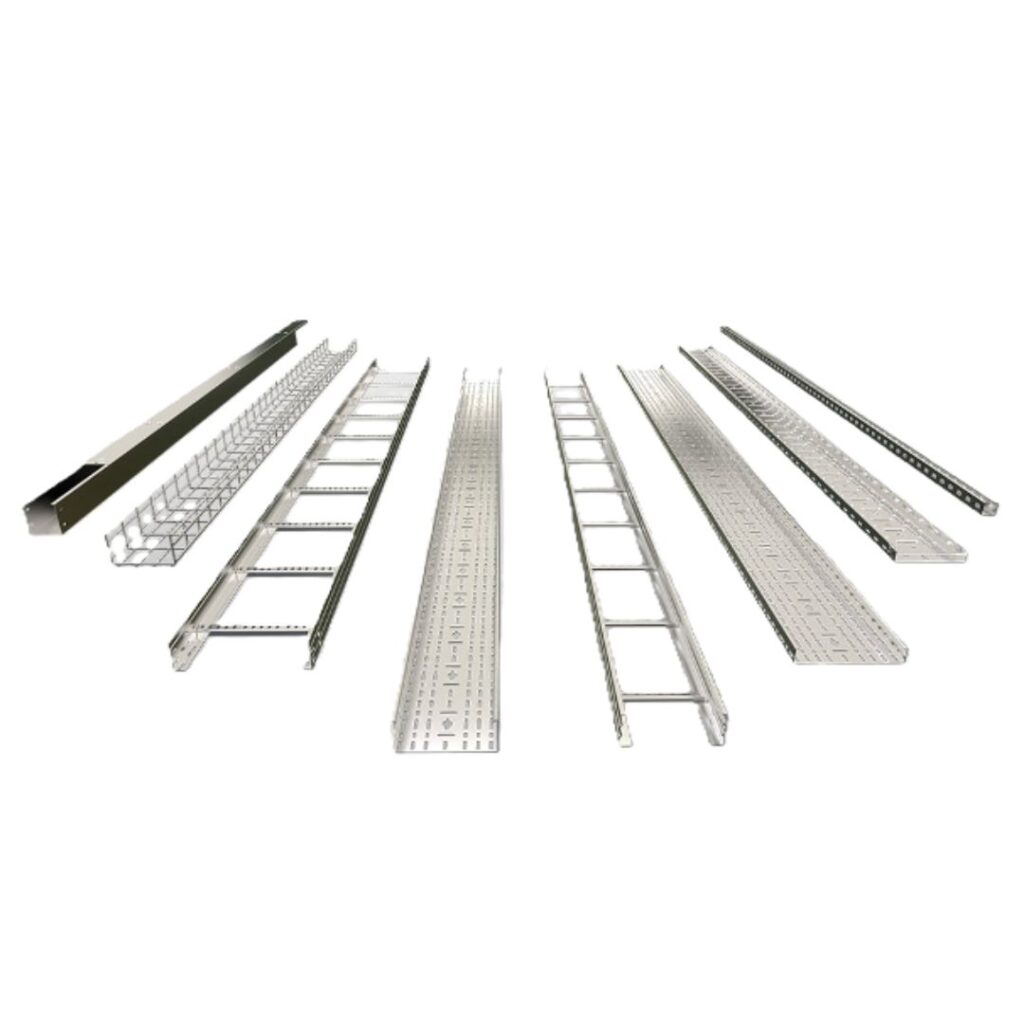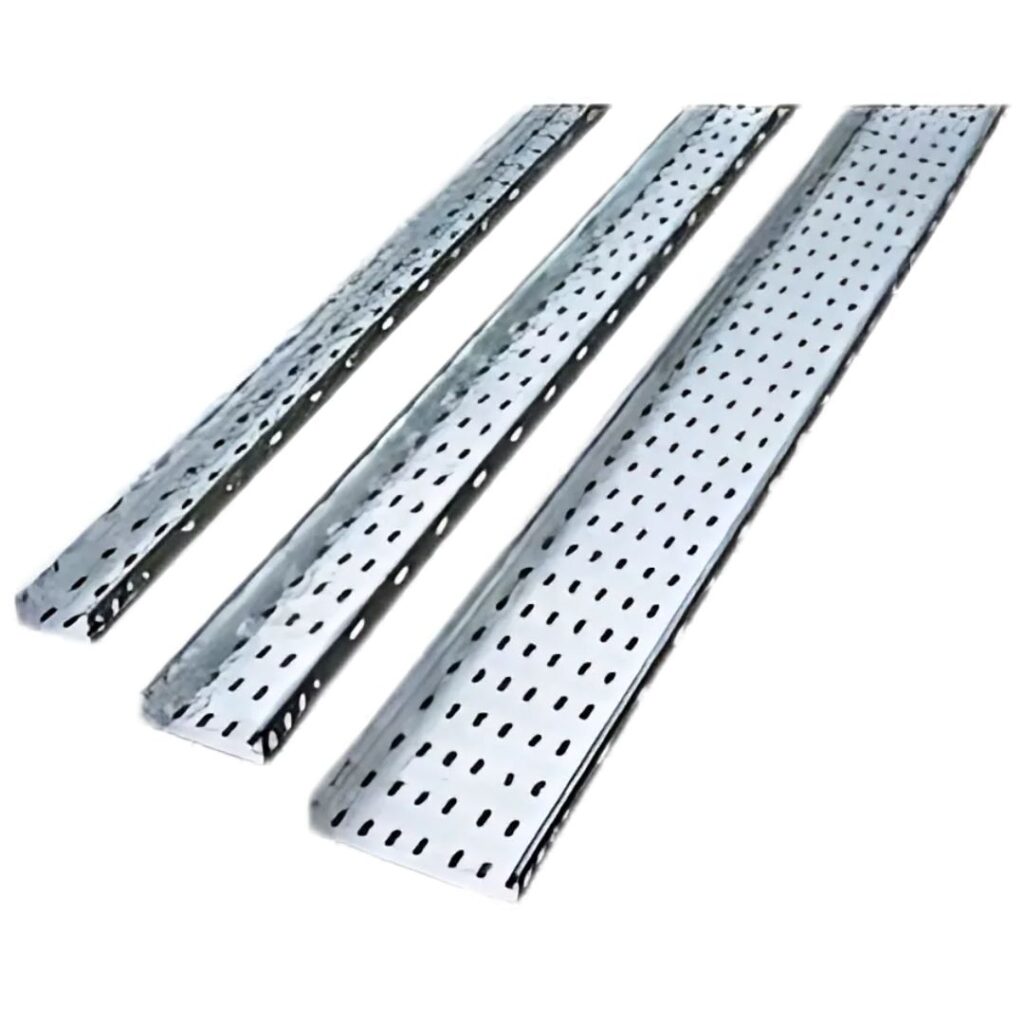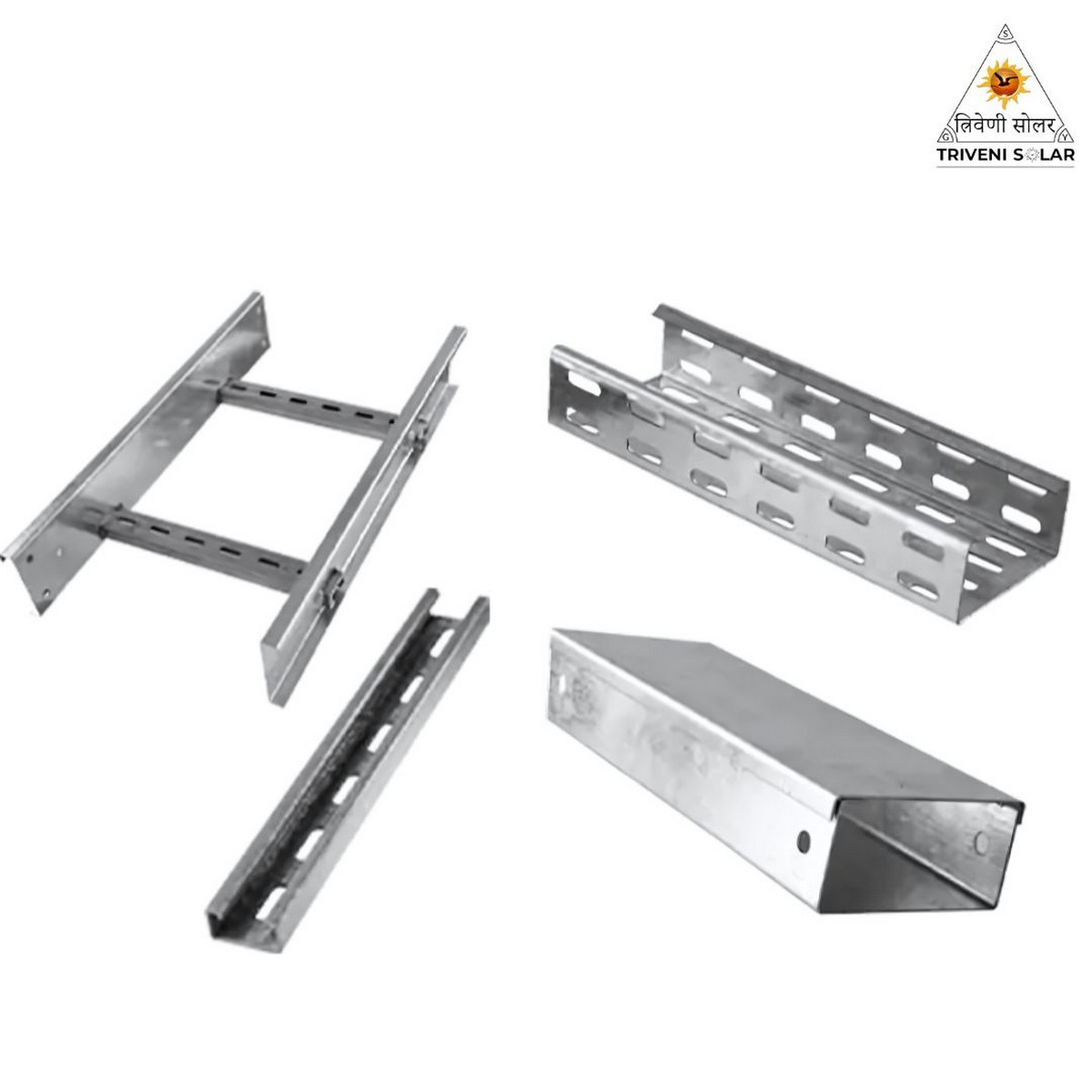Cable tray and management systems are essential for organizing, protecting, and routing electrical cables efficiently. They enhance safety, reduce maintenance, and ensure scalable infrastructure for industrial, commercial, and solar energy projects.
Table of Contents
- Introduction: The Importance of Cable Management
- What Are Cable Trays & Management Systems?
- Types of Cable Trays & Their Applications
- Materials & Construction Standards
- Benefits of Using Cable Management Systems
- Installation Guidelines & Best Practices
- Cable Management in Solar Power Projects
- Maintenance & Troubleshooting Tips
- Comparing Cable Trays vs Conduits
- Emerging Trends & Innovations
- FAQs
- Conclusion & CTA
Introduction: The Importance of Cable tray Management
In today’s rapidly growing industrial and solar energy sectors, proper cable management is not just an option—it’s a necessity. Poorly managed cables can lead to electrical hazards, maintenance challenges, and operational inefficiencies. Implementing Cable Trays & Management Systems ensures a safe, organized, and scalable electrical infrastructure that meets modern energy and industrial demands.
What Are Cable Tray & Management Systems?
Cable tray are rigid structural systems designed to support and route electrical cables in buildings, factories, and solar installations. They provide a clear path for power, data, and control cables, protecting them from physical damage while simplifying installation and maintenance. A management system integrates trays, ladders, conduits, supports, and accessories to ensure complete control over cable routing and organization.
Think of them as the backbone of your electrical infrastructure—reliable, durable, and engineered for efficiency.
Types of Cable Tray & Their Applications
Ladder Cable Tray
These trays consist of two side rails connected by rungs, resembling a ladder. They are ideal for heavy-duty cables, offering excellent ventilation and load-bearing capacity. Perfect for industrial facilities, power plants, and large solar projects.
Perforated Cable Tray
Perforated trays feature a solid base with regularly spaced holes, allowing heat dissipation and cable attachment flexibility. Commonly used in commercial buildings, server rooms, and medium-load industrial setups.
Solid Bottom Cable Tray
Solid bottom trays provide maximum protection from dust, moisture, and debris. Suitable for sensitive cables, outdoor installations, and harsh environments where protection is critical.
Wire Mesh Cable Tray
Wire mesh trays are lightweight and flexible, allowing quick installation and easy modification. Ideal for data centers, IT facilities, and projects requiring frequent cable reconfiguration.
Custom & Specialized Tray
Some projects require unique solutions—curved trays, multi-tiered systems, or heavy-duty modular designs. Custom trays can be tailored to meet load, environmental, and aesthetic requirements.

Types of Cable Tray – Features & Applications
| Type | Material | Application | Advantages |
|---|---|---|---|
| Ladder | GI/HDGI Steel, Aluminum | Heavy industrial, solar | High load, excellent ventilation |
| Perforated | Steel, Aluminum | Commercial buildings, IT | Ventilated, moderate load |
| Solid Bottom | Steel, FRP | Outdoor, sensitive cables | Maximum protection, dust/water resistant |
| Wire Mesh | Steel, Aluminum | Data centers, IT | Flexible, easy installation |
| Custom | Steel, Aluminum, FRP | Specialized industrial/solar | Tailored solutions, multi-tiered |
Materials & Construction Standards
Choosing the right material ensures longevity, reliability, and safety. Common options include:
- GI & HDGI Steel: Durable, corrosion-resistant, suitable for outdoor and industrial projects.
- Aluminum: Lightweight, easy to install, and resistant to corrosion.
- PVC & FRP: Non-conductive, perfect for chemical or moisture-prone environments.
All cable trays should comply with international standards such as IEC 61537 and NEMA VE 1 for safe load-bearing and installation.
Benefits of Using Cable Management Systems
- Safety & Fire Protection: Organized cables reduce fire risks and electrical hazards.
- Efficient Space Utilization: Maximize industrial floor and wall space without clutter.
- Ease of Maintenance & Upgrades: Add or reroute cables easily without disturbing existing systems.
- Cost Savings & Durability: Long-lasting materials reduce replacements and downtime costs.
Installation Guidelines & Best Practices
Proper installation ensures longevity and performance:
- Planning & Design: Map cable routes, consider future expansion, and select appropriate tray types.
- Load Calculations: Adhere to tray load limits and standards.
- Environmental & Safety Considerations: Avoid direct exposure to chemicals, heat, or heavy vibrations.
- Secure Supports: Use brackets, clamps, and fasteners as per manufacturer recommendations.
Cable Management in Solar Power Projects
For solar installations, cable trays are indispensable:
- Rooftop Solar Systems: Lightweight trays to secure PV module connections and AC/DC wiring.
- Ground-Mounted Solar Arrays: Robust, corrosion-resistant trays for long-term outdoor exposure.
- Floating Solar Installations: Special corrosion-proof and waterproof trays for water-based systems.
Maintenance & Troubleshooting Tips
Regular inspection ensures reliability:
- Check for loose fasteners or supports.
- Inspect cables for wear, overheating, or corrosion.
- Clean trays to prevent dust accumulation.
- Replace damaged sections immediately to prevent failures.
Comparing Cable Tray vs Conduits
| Feature | Cable Tray | Conduit |
|---|---|---|
| Installation | Faster, flexible routing | More labor-intensive |
| Maintenance | Easy access for inspection & upgrades | Difficult to modify or add cables |
| Cost | Generally lower for large projects | Higher due to labor & materials |
| Protection | Moderate, depends on tray type | High, fully enclosed |
| Applications | Industrial, solar, commercial | Buildings, outdoor hazardous areas |
Emerging Trends & Innovations
- Modular & Flexible Trays: Allow quick adjustments and expansion.
- Smart Cable Management: Sensors for monitoring load, temperature, and integrity.
- Eco-Friendly Materials: Recyclable and corrosion-resistant options.

FAQs
What is the primary purpose of cable tray?
Cable trays organize, protect, and route electrical cables efficiently, enhancing safety, maintenance, and scalability for industrial and solar projects.
Which type of cable tray is best for heavy industrial use?
Ladder-type cable trays are ideal due to their high load capacity and excellent ventilation, making them suitable for industrial facilities and large solar arrays.
Can cable trays be used outdoors?
Yes. Steel, aluminum, and FRP trays with proper corrosion protection are suitable for outdoor and solar installations.
How do cable trays compare to conduits?
Cable trays are faster to install and easier to maintain, while conduits provide complete cable protection. Choice depends on project needs.
Are cable trays compatible with solar projects?
Absolutely. Cable trays secure PV and AC/DC connections, ensuring long-term reliability in rooftop, ground, and floating solar systems.
Conclusion
Implementing Cable Trays & Management Systems is a strategic choice for any industrial, commercial, or solar energy project. They provide safety, scalability, and cost efficiency while simplifying maintenance and upgrades. At SolarStructure, we offer high-quality, durable cable trays and management solutions tailored to your project needs.


